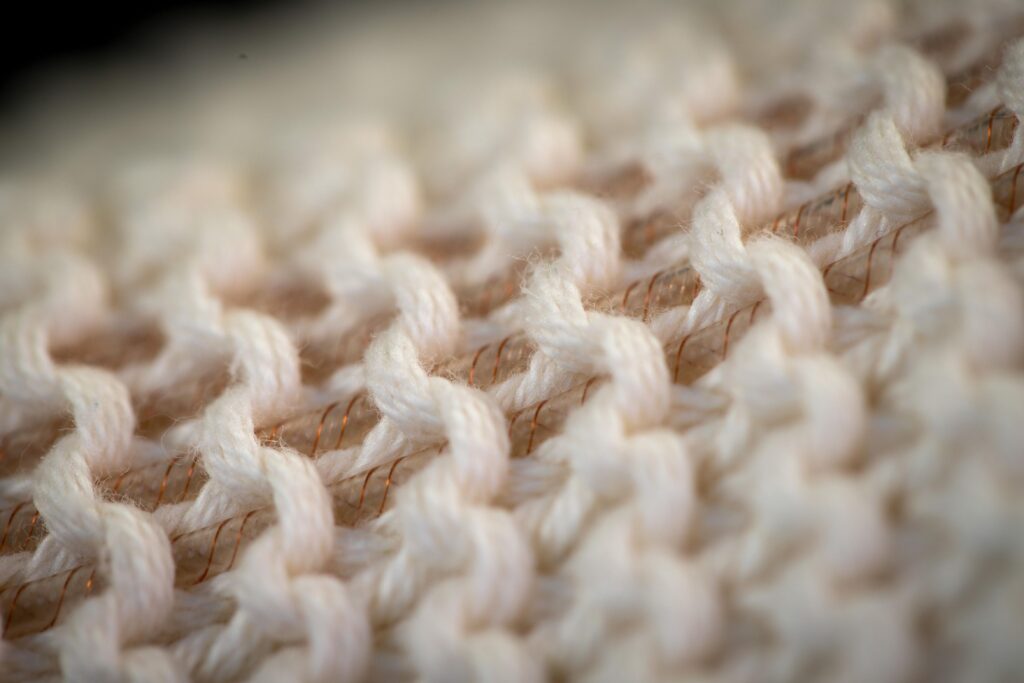
Many fluid-based wearable assistive technologies today require a large and noisy pump that is impractical, if not impossible, to integrate into clothing, so wearable devices are routinely tethered to unwearable pumps. But researchers at the Soft Transducers Laboratory (LMTS) in the School of Engineering, École Polytechnique Fédérale de Lausanne (EPFL), have developed an elegantly simple solution.
“We present the world’s first pump in the form of a fiber; in essence, tubing that generates its own pressure and flow rate,” says LMTS head Herbert Shea. The fiber-like pumps allow high-pressure fluidic circuits to be woven into textiles without an external pump. Soft supportive exoskeletons, thermoregulatory clothing and immersive haptics could now be powered from pumps sewn into the fabric of the devices themselves.
The LMTS fiber pumps use a principle called charge injection electrohydrodynamics (EHD) to generate a fluid flow without any moving parts. Two helical electrodes embedded in the pump wall ionize and accelerate molecules of a special non-conductive liquid. The ion movement and electrode shape generate a net forward fluid flow, resulting in silent, vibration-free operation, and requiring just a palm-sized power supply and battery.
The pump’s simple design has a number of advantages. The materials required are cheap and readily available, and the manufacturing process can be easily scaled up. Because the amount of pressure generated by the pump is directly linked to its length, the tubes can be cut to match the application, optimizing performance while minimizing weight. The robust design can also be washed with conventional detergents.
The authors have already demonstrated how these fiber pumps can be used in new and exciting wearable technologies. For example, they can circulate hot and cold fluid through garments for those working in extreme temperature environments or in a therapeutic setting to help manage inflammation; and even for those looking to optimize athletic performance.
The study also describes artificial muscles made from fabric and embedded fiber pumps, which could be used to power soft exoskeletons to help patients move and walk. Work has already started on scaling up the production of the fiber pumps, and the LMTS also has plans to embed them into more complex wearable devices.
The research was published in the journal Science in March 2023.
 TEXTILES.ORG
TEXTILES.ORG


